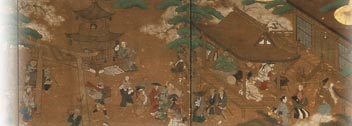International symposium "New Perspectives on Chinese Film History"
Outline
| date | January 14 2012, 13:00-17:10 |
|---|---|
| Venue | Toyama campus |
Details
On January 14, 2012, the Film Research Course held an international conference titled “New Perspectives on Chinese Film History.” Although the scheduling of the conference conflicted with the National Center Test for University Admissions, many non GCOE people participated, as did many experts from throughout Japan who specialize in Chinese film and theatre studies, resulting in lively academic exchange.
The China Project of the Film Research Course (under the category Film History) has been undertaken by Professor KOMATSU Hiroshi (GCOE programme member), Professor SATO Akinari (GCOE collaborative researcher), and YAMAMOTO Ritsu (GCOE research assistant). Immediately after the GCOE Programme was initiated, these three began collecting large amounts of cinematic materials through surveys conducted in China. They also interviewed many researchers and collectors, and researched cinematic culture in China, with a special emphasis on the prewar era. This international conference featured research presentations concerning early Chinese film history, which can be said to be the unique province of this project. We also invited Professor SHI Chuan of Shanghai University, a famous Chinese film historian, to present a lecture about important but hitherto nearly unknown issues related to Chinese film history, and engaged in research presentations and discussions. The conference started off with YAMAMOTO’s presentation on “The Screening of Chinese Films in their Period of Infancy.” This was a revisiting of an article YAMAMOTO had published in the Global COE bulletin Theatre and Film Studies 2009 Vol. 1 concerning film’s initial reception in China and related matters. To this she added a report on research (originally presented on October 8, 2011 at the 63rd Annual Conference of the Sinological Society of Japan) on the reception enjoyed by Cook, Johnson, and Charvet when they exhibited films to the Chinese public in 1897. On the basis of this research, further consideration was given to the context surrounding these early screenings.
Next, Professor KOMATSU Hiroshi gave a presentation titled, “The Gaze of the Other in Early Chinese Film.” Using as a primary source the articles published in the French-language newspaper L’Echo de Chine published in Shanghai in the late Qing dynasty, Professor KOMATSU talked about film culture in the concession territories in China as seen from the perspective of “the other,” meaning the Westerners who lived in Shanghai at the time. The fact that the concession territories were part of the background supporting film culture in Shanghai at the time cannot be ignored. However, until now there has been absolutely no research on Chinese film history that utilizes L’Echo de Chine as a primary source. Revealing many new facts, Professor KOMATSU’s lecture truly shed new light on the history of film in China. He also publicly exhibited for the first time precious footage of China taken in the early 1990s, which was avidly viewed by participants. After a break, Professor SHI Chuan of Shanghai University gave a lecture on “Fragments of Images from the Republic of China Period and Practical Applications of Early Documentary Films.” On October 12, 2011, Professor SHI gave a presentation at the “Symposium on Early Documentary Films and Preview of Archival Images of the People’s Revolution,” where 45 valuable films organized in 14 parts taken in China between the years 1898 and 1932 were shown for the first time. Showing a great number of photographs, he talked about the issues raised by this footage. Finally, all participants entered into a lively discussion concerning the presentations, lectures, and film showings they had heard and seen. In closing, I would like to thank Professor SHI and all the many other people who participated in the conference, as well as those who provided suggestions for our research. I would also like to thank again YODA Natsuko and SHIBUI Kimiya, the graduate students at Waseda University who interpreted for us on the day.


